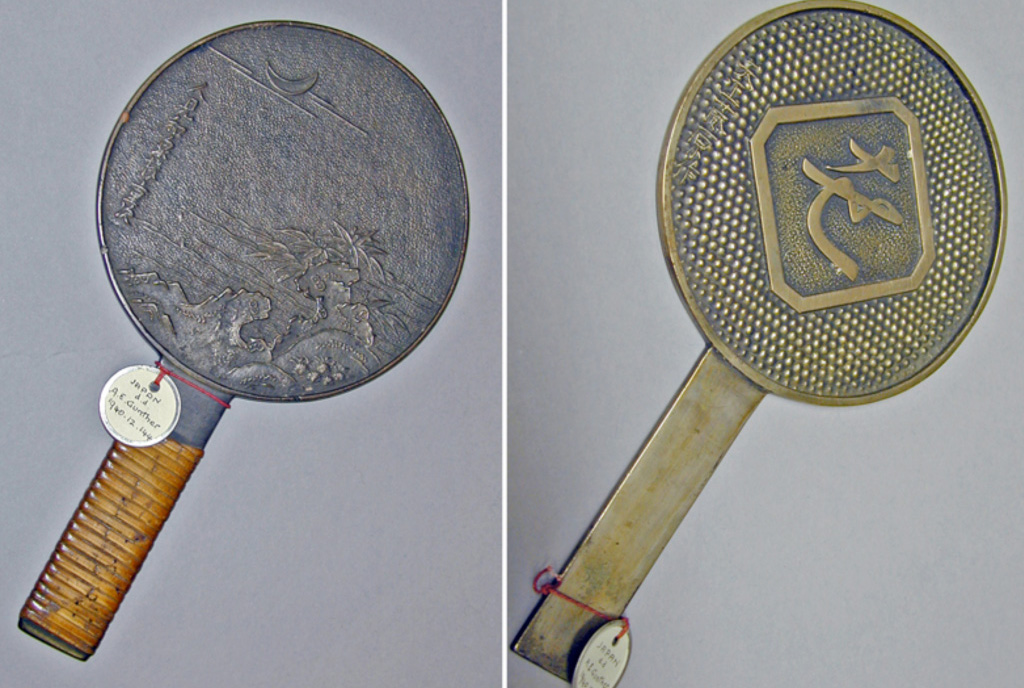Two e-kagami
Japan, Edo period, c. 1600–1868
 Donated by Albert Everard Gunther in 1940; 1940.12.144–.145By the Edo period handles, often bound in rattan, were added to Japanese brass or bronze mirrors. The mirror discs also became larger to accommodate the increased size of ladies' hair arrangements. These types of mirror were known as e-kagami.
Donated by Albert Everard Gunther in 1940; 1940.12.144–.145By the Edo period handles, often bound in rattan, were added to Japanese brass or bronze mirrors. The mirror discs also became larger to accommodate the increased size of ladies' hair arrangements. These types of mirror were known as e-kagami.
Mirrors had become decorative as well as functional objects, as can be seen by the typical landscape and crescent moon scene on the example on the left. Running vertically down its left hand side of the mirror on the right is the maker's name and Tengka Ichi meaning 'First under Heaven'. From the Heian through to the Muromachi periods (AD 794–1568), Japanese mirror-casters were as esteemed as swordsmiths and were given similar honorary titles. This was because the Imperial Regalia of Japan consists of a sword (for valour), a jewel (for benevolence), and a mirror (for wisdom). The conferment of such titles ceased in the Edo period but mirror makers continued to use them for years afterwards.
